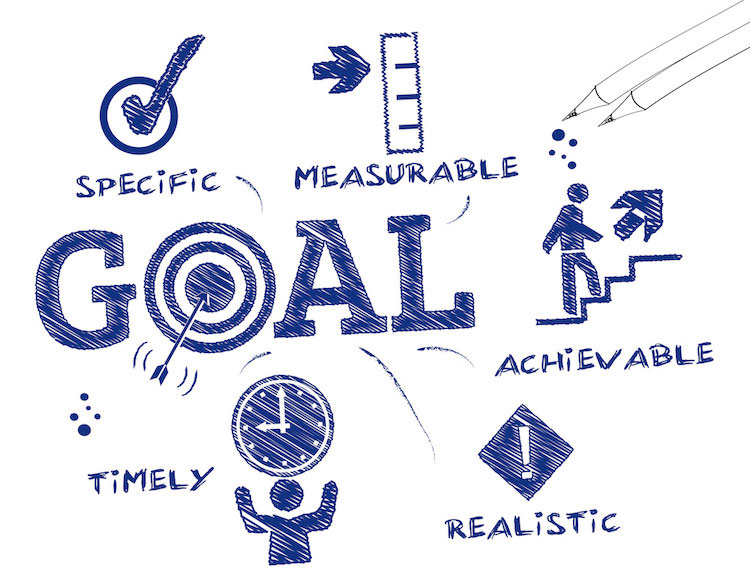Goal setting can be a useful tool in many arenas. Nearly 90% of the time, setting specific and challenging goals leads to better performance than “do your best” goals or none at all. Goals can direct attention, mobilize effort, increase persistence, and help you form good strategies.
Writing down your goals can help you to achieve them. In addition, setting goals using a standardized method, such as the one described here, can help you stick with and feel you can accomplish those goals.
A popular goal-setting method is the “SMART” goal technique, which meets these criteria:
- Specific
- Measurable
- Achievable or Action-oriented
- Relevant
- Time-sensitive
 Specific
Specific
Specific goals leave no room for doubt. For example, setting a goal to do better on your fitness tests might feel too large or vague a goal. Instead, break it up into a more narrowly focused target, such as “I want to improve my APFT run time.”
Measurable
Decide how you’ll measure whether you’ve met a specific goal. For instance, you might want to shave 40 seconds off your APFT 2-mile run time (5 seconds off each quarter mile). Achievable goals like this serve as great milestones because they fuel motivation to set high goals and commit to them.
Achievable or Action-oriented
Set achievable, action-oriented goals by paying attention to the language you use. Rather than using words such as “I’ll try to shave 40 seconds from my time” (you might not) or even “I will shave off 40 seconds” (at some point in the future), say to yourself “I am shaving 40 seconds off my time” (that is, right now).
Relevant
Set goals that are relevant for you. 40 seconds might be impossible if you’re already in top shape, or it might not be practical now if you’re in poor condition. But it could be just right if you’re reasonably fit yet with room to improve. It will be easier to stay engaged and feel rewarded in the process when you set goals that fit what is both important and possible for you at the current time.
Time-sensitive
Create goals that are time oriented for your overall goal and for the important sub-goals that can help you reach your larger goal.
Overall goal: Some improvements, especially ones related to long-term physical fitness, are dependent on individual factors, so the exact timeline will vary from person to person. For example, you might set a time frame to improve your run time by 40 seconds in 8 weeks, whereas your buddy might set the same goal over a 12-week time frame. Quantifying a time frame for the process allows you to set a realistic schedule around your performance goals.
Sub-goals: Both performance goals and process goals can serve as sub-goals or benchmarks for monitoring progress toward your overall goals. Performance goals, such as shaving 5 seconds per week off your time, allow you to compare your performance between past and present rather than focus on your rank compared to others. Process goals are the important steps you take to accomplish your desired performance; they can be a bit more subjective but can still be quantified. For example, you might say, “I’m going to stick to my training schedule over the next 2 weeks. I will run at the designated time each day and follow through with recovery, with only one day I can reschedule.” By breaking down a larger goal into specific, smaller goals that can be accomplished in the near future, you’re more likely to move toward your larger goal step by step.
A word of caution with SMART goals: Don’t let them stifle innovation! If you set goals that are too rigid, you could keep yourself “in the box” rather than allowing yourself to take the risks required for big new ideas to develop. You want to find the right balance.
The examples here are about achieving optimal physical performance, but these tips can help you set SMART goals across all your pursuits! You can download, print, and use HPRC’s worksheet to help set your own SMART goals.
Learn more at our “Get into Fighting Weight” guide.




